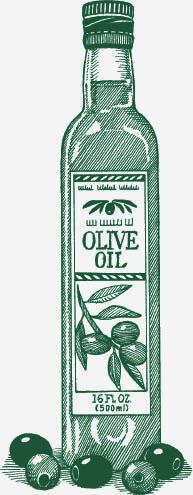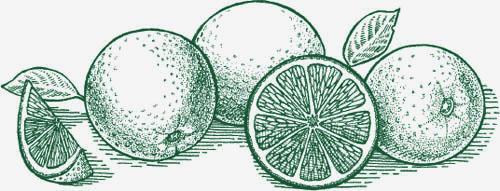Bread Machine (79 page)

- Wooden board or marble slab (about 18-by-18-inch) for finishing, kneading, and shaping
- Plastic dough card, or dough scraper (consider this an extension of your hand), great for scraping wet doughs out of the bread pan and for cleaning the work surface of accumulated dough
- Metal bench knife for portioning
- Parchment paper for lining baking sheets
- Baking pans: heavy gauge aluminum or steel 18-by-13-inch half-sheet baking pans, ceramic baking sheet, perforated baking sheets
- Black steel baguette trays, 18 by 2 inches with two attached cradles
- French bâtard cradle pan, 15
1
/
2
-by-8-by-4-inch - Breadstick pans
- Banetton or a medium colander and clean tea towels
- Timer
- Kitchen shears and small sharp knife or
lamé
for slashing before baking - Ceramic baking stone (12- or 16-inch round or 16-by-14-inch rectangle) or 12 to 16 unglazed quarry tiles
- Heavy-duty oven mitts that are big enough to protect your wrists and lower arm, or barbecue mitts
- Large metal cooling rack
G
rissini
is the Italian word for breadsticks. They are shaped by hand and then baked at a high temperature in the oven. They look very different than mass-market, machine-extruded breadsticks, which all look exactly alike; these are charmingly knobby and irregular. Bake until they are crisp. Otherwise, if they are soft like bread, they will bend and break when you stand them in a crock to serve. If you are unsure about making them freeform, you can use a breadstick tray, which is made up of a series of very thin cradles. Serve these breadsticks in an appetizer buffet, plain or with butter, or wrapped with smoked turkey or prosciutto. They are also wonderful with soup.
1
1
/
2
- OR 2-POUND-LOAF MACHINES
1
1
/
2
cups water
1
/
4
cup olive oil
1 teaspoon salt
1
1
/
2
cups semolina flour
2
1
/
2
cups unbleached all-purpose flour
1 tablespoon SAF yeast or 1 tablespoon plus
1
/
2
teaspoon bread machine yeast
About
1
/
2
cup additional olive oil, for dipping
About 1
1
/
4
cups semolina flour, for sprinkling and rolling
 Place all the dough ingredients in the pan according to the order in the manufacturer’s instructions. Program for the Dough cycle; press Start.
Place all the dough ingredients in the pan according to the order in the manufacturer’s instructions. Program for the Dough cycle; press Start.
 Dust a work surface with semolina flour. When the machine beeps at the end of the cycle, turn the dough out onto the work surface and pat it into a thick 12-by-6-inch rectangle without kneading or overworking the dough. Leave this to rise on the work surface, especially if it is a marble slab, or transfer it to an 17-by-11-inch baking sheet that has been dusted with semolina flour. Brush the top of the dough with olive oil. Cover with plastic wrap and let rise at room temperature until doubled in bulk, about 1 hour.
Dust a work surface with semolina flour. When the machine beeps at the end of the cycle, turn the dough out onto the work surface and pat it into a thick 12-by-6-inch rectangle without kneading or overworking the dough. Leave this to rise on the work surface, especially if it is a marble slab, or transfer it to an 17-by-11-inch baking sheet that has been dusted with semolina flour. Brush the top of the dough with olive oil. Cover with plastic wrap and let rise at room temperature until doubled in bulk, about 1 hour.
 Place a baking stone on the center rack and preheat the oven to 425°F. Brush 2 heavy 17-by-11-inch baking sheets with olive oil. Place the additional olive oil and semolina flour in two shallow bowls.
Place a baking stone on the center rack and preheat the oven to 425°F. Brush 2 heavy 17-by-11-inch baking sheets with olive oil. Place the additional olive oil and semolina flour in two shallow bowls.
 Press the dough all over to gently deflate it and place it on a floured work surface. Using a pastry or pizza wheel, cut the dough into four equal pieces lengthwise; the dough will deflate a bit more. Cut each piece into 6 thick strips lengthwise. Pick up each end of each strip and stretch to the desired length or quickly roll out each strip with your palms, stretching from the center out to the ends, to a size that will fit your baking sheet. Dip each strip in the olive oil and then roll it in semolina flour. Place the strips spaced evenly apart on the baking sheets. Each sheet will hold 12
Press the dough all over to gently deflate it and place it on a floured work surface. Using a pastry or pizza wheel, cut the dough into four equal pieces lengthwise; the dough will deflate a bit more. Cut each piece into 6 thick strips lengthwise. Pick up each end of each strip and stretch to the desired length or quickly roll out each strip with your palms, stretching from the center out to the ends, to a size that will fit your baking sheet. Dip each strip in the olive oil and then roll it in semolina flour. Place the strips spaced evenly apart on the baking sheets. Each sheet will hold 12
grissini
. Bake each sheet separately in the center of the oven for 15 to 20 minutes, or until the
grissini
are lightly browned and crisp. Remove the
grissini
from the baking sheets to cool completely on racks.

A Baker’s Glossary of Bread Starters
Country breads have a language all their own, which includes terms that can be quite confusing at times, especially those describing the different starters. The following list of definitions, including the meanings of some foreign words, is an invaluable reference while you are deciphering and working on European-style country bread recipes.
Biga
—A thick, rather firm-textured, Italian bread dough sponge starter made of flour, water, and yeast.
Build
—Term used to describe the adding of more liquid and flour to a starter to increase its volume before using it in a dough.
Chef
—This is the foundation step to creating a natural starter; after building and feeding it will develop into a
levain
. Also known as a
chef levain
.
Levain
—Also a starter,
levain
is the French word for leavening. A
levain naturel
consists only of flour and water and is fermented by wild airborne yeasts. A
levain levure
is fortified with some commercial yeast and ready to use a few hours after the building of a
chef
.
Mother or madre
—An American term used to describe a sourdough starter
Pâte fermentée
—This is the “old dough” method of pre-fermentation, in which a piece of dough is taken from a previous batch of dough to be added to a new batch.
Pâte fermentée
can also be made fresh each time you bake. This starter is as thick as a regular bread dough, made with a ratio of 3 parts flour to 1 part water.
Poolish
—A liquidy French bread dough starter made of flour, water, and yeast. It is named for its Polish origin and composed of half water and half flour.
Pre-ferment
—A term referring to any type of starter or sponge that is initially fermented before being made into a bread dough.
Sourdough
—A thin starter created from flour, water, and naturally occurring airborne wild yeasts. Commercial yeasts may also be used.
Sponge
—A bread starter that is made from an initial mixing of some liquid with some commercial or natural yeasts and flour to form a batterlike mixture that pre-ferments before being added to a dough.
Starter
—Any natural or commercial yeast-reinforced sourdough, sponge, or piece of old dough that is added to a dough for leavening power, shortening the baking process and enhancing the flavor of the bread.
